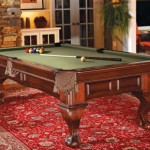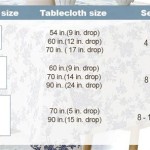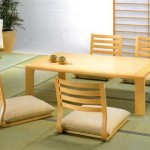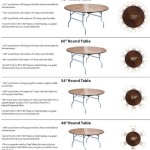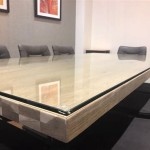The Enduring Appeal of the Wooden Dining Room Table
The wooden dining room table stands as a cornerstone of domestic life, serving as a central gathering point for meals, conversations, and shared experiences. Its enduring popularity stems from a combination of factors, including its aesthetic versatility, inherent durability, and the sense of warmth and connection it can bring to a home. Beyond its functional purpose, a wooden dining room table often becomes a cherished heirloom, imbued with memories and a tangible link to family history.
Choosing the right wooden dining room table involves careful consideration of several aspects, ranging from the type of wood used in its construction to its size, shape, and finish. Understanding these elements is crucial for selecting a table that not only complements the existing décor but also meets the functional requirements of the household.
Wood Species and Their Characteristics
The selection of wood species significantly impacts the appearance, strength, and overall longevity of a dining room table. Different types of wood possess unique grain patterns, colors, and hardness ratings, making them suitable for various design styles and levels of use. Hardwoods, derived from deciduous trees, generally offer greater durability and resistance to wear and tear compared to softwoods, which come from coniferous trees.
Oak is a widely favored choice for dining room tables due to its strength, distinctive grain pattern, and availability. Red oak exhibits a warm, reddish tone, while white oak possesses a lighter, more neutral color. Both varieties are known for their durability and ability to withstand everyday use. Oak tables often feature a traditional or rustic aesthetic, but can also be adapted to more contemporary designs.
Maple, another popular hardwood, is characterized by its fine grain and smooth texture. It is generally lighter in color than oak, with a creamy white or light brown hue. Maple is a versatile wood that can be stained and finished in a variety of ways, making it suitable for both modern and traditional interiors. Its hardness and resistance to scratches and dents make it a practical choice for households with children.
Cherry wood is prized for its rich, reddish-brown color and smooth, even grain. It is a relatively soft hardwood, so it may be more susceptible to dents and scratches than oak or maple. However, its beautiful color and ability to develop a rich patina over time make it a desirable option for those seeking a sophisticated and elegant dining room table. Cherry wood is often used in traditional and formal dining rooms.
Walnut is a premium hardwood known for its dark, chocolate-brown color and distinctive grain patterns. It is a strong and durable wood that is resistant to warping and cracking. Walnut tables often have a sophisticated and luxurious appearance, making them a statement piece in any dining room. Due to its cost, walnut is often used in high-end furniture.
Reclaimed wood, often sourced from old barns, factories, or other structures, offers a unique and sustainable option for dining room tables. Reclaimed wood tables typically exhibit a rustic and weathered appearance, with imperfections and variations in color and texture that add character and charm. Choosing reclaimed wood contributes to environmental conservation by repurposing existing materials.
Size and Shape Considerations
The size and shape of a dining room table should be carefully considered in relation to the size and layout of the dining room. A table that is too large can overwhelm the space, making it feel cramped and uncomfortable, while a table that is too small may not accommodate the number of people who regularly dine together. The shape of the table also plays a significant role in the overall aesthetic and functionality of the room.
Rectangular tables are the most common and versatile choice for dining rooms. They are well-suited for both small and large spaces and can comfortably accommodate a larger number of people. Rectangular tables are also ideal for formal dining rooms, as they create a sense of structure and order.
Round tables are a good option for smaller dining rooms or spaces where a more intimate and conversational atmosphere is desired. They encourage eye contact and make it easier for everyone at the table to participate in discussions. Round tables are also a good choice for families with young children, as they eliminate sharp corners.
Square tables are a less common option, but they can be effective in small, square-shaped dining rooms. They create a sense of balance and symmetry and can be a good choice for couples or small families. However, square tables may not be suitable for accommodating a large number of people.
Oval tables offer a combination of the benefits of rectangular and round tables. They provide ample surface area for dining while also promoting conversation and intimacy. Oval tables are a good choice for dining rooms that are slightly longer than they are wide.
Extendable tables are a practical solution for those who occasionally need to accommodate a larger number of guests. These tables typically feature one or more leaves that can be added to the center of the table to increase its length. Extendable tables are a versatile option for families who enjoy entertaining.
Finishes and Maintenance
The finish of a wooden dining room table not only enhances its aesthetic appeal but also provides protection against scratches, stains, and moisture. Various types of finishes are available, each with its own set of advantages and disadvantages. The choice of finish should be based on the type of wood used, the desired look, and the level of maintenance required.
Polyurethane is a durable and water-resistant finish that provides excellent protection against scratches and stains. It is a popular choice for dining room tables that are used frequently and exposed to spills. Polyurethane is available in a variety of sheens, from matte to high gloss.
Varnish is another durable finish that provides good protection against moisture and wear. It is similar to polyurethane but tends to be slightly less resistant to scratches and stains. Varnish is available in a variety of sheens and can be applied in multiple coats for added protection.
Lacquer is a fast-drying finish that provides a smooth and even surface. It is often used on furniture with intricate details or carvings. However, lacquer is less durable than polyurethane or varnish and can be more susceptible to scratches and stains.
Oil finishes, such as tung oil or linseed oil, penetrate the wood and provide a natural, matte finish. They enhance the wood's natural grain and color and are relatively easy to apply and maintain. However, oil finishes offer less protection against scratches and stains than polyurethane or varnish and require regular reapplication.
Wax finishes provide a soft, satin sheen and protect the wood from dirt and dust. They are easy to apply and maintain but offer limited protection against moisture and scratches. Wax finishes are often used in conjunction with oil finishes to enhance their protective properties.
Maintaining a wooden dining room table involves regular cleaning and occasional refinishing. Dusting the table regularly with a soft cloth will help to prevent the buildup of dirt and grime. Spills should be cleaned up immediately with a damp cloth to prevent staining. Avoid using harsh chemicals or abrasive cleaners, as they can damage the finish. Applying a furniture polish or wax periodically will help to protect the finish and keep the table looking its best.
Scratches and dents can be repaired with wood filler or touch-up paint. For more extensive damage, the table may need to be professionally refinished. Refinishing involves stripping the old finish, sanding the wood smooth, and applying a new finish. This process can restore the table to its original condition and extend its lifespan.
Choosing a wooden dining room table is a significant investment that can enhance the beauty and functionality of a home for many years to come. By considering the various factors discussed above, individuals can select a table that meets their specific needs and preferences, creating a welcoming and inviting space for family and friends to gather.

Sobu Oakland Designed And Handpicked Furniture

Emmerson Reclaimed Wood Rectangle Dining Table 62 72 87 West Elm

Farmhouse Table Solid Wood Kitchen Dining Room James
:strip_icc()/dining-room-table-decor-ideas-1-ashley-montgomery-design-the-nesbit-ef78d3dec9564a2eace6010270f75fa3.png?strip=all)
33 Standout Dining Table Décor Ideas

Pin By Anne Marie Burns On Kitchen Wooden Dining Table Designs Design Room

Solid Wood Dining Table Natural Wooden Office Farmhouse Kitchen Dine Room

Whole High Quality Multiple Size European Modern Luxury Solid Wood Dining Table Set Wooden Furniture Room And Chairs China Made In Com

How Much Do Dining Tables Cost Countryside Amish Furniture

Furniture Of America Amani 78 75 In W Rectangle Natural Solid Mango Wood Dining Table With 4 Drawers Idf 51002 The Home Depot

Reclaimed Wood Dining Tables Benches The Bespoke Carpentry Co
Related Posts



